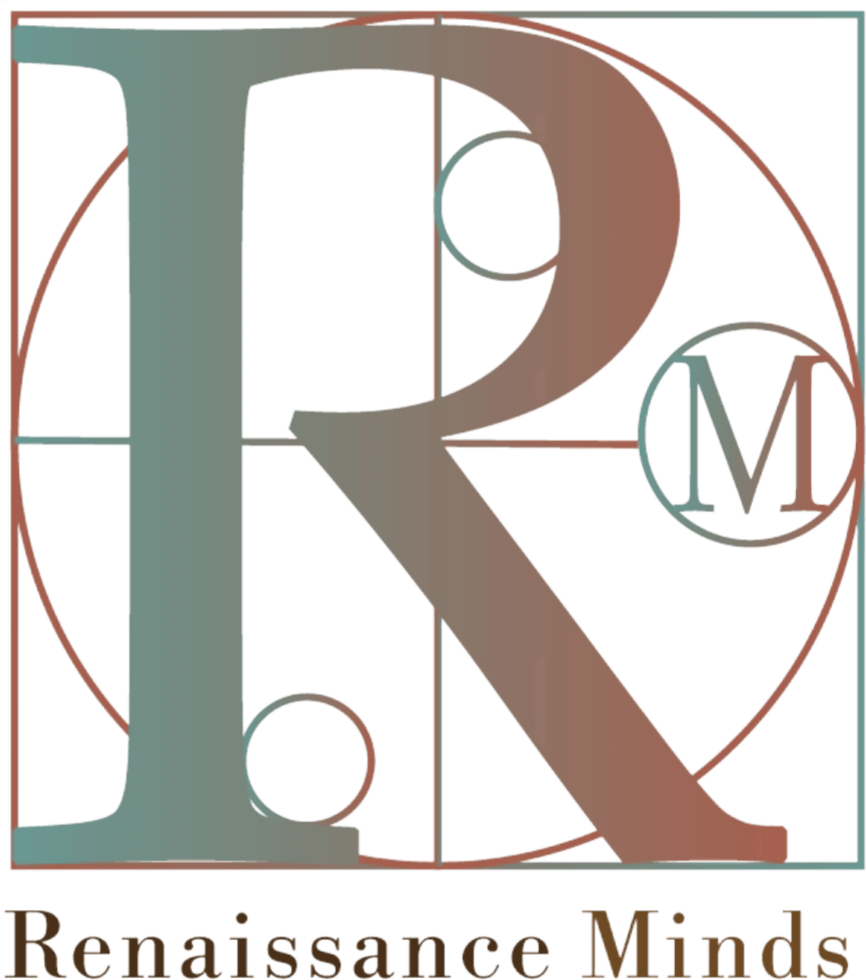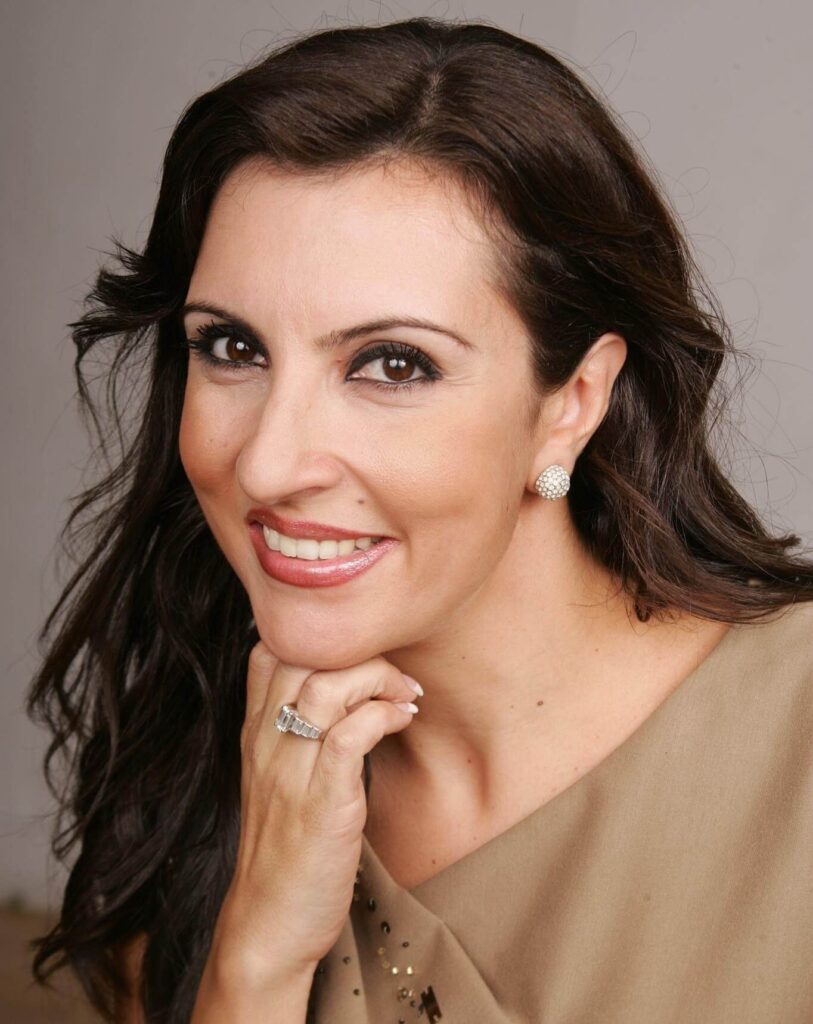Renaissance Minds Q&A Interview with Banfi CEO
By Silvia Davi, February 2024
Banfi’s Evolutionary Quest to Deliver a Better Wine World & A Way of Life
Explore the magic behind Banfi Vinters with this insider’s conversation for Renaissance Minds with President and CEO, Cristina Mariani-May. This Q&A features a remarkable modern-day renaissance woman and the third generation Mariani family leader of the extraordinary internationally renowned wine organization and Tuscan hospitality vineyard estate. Learn about Banfi’s family business dating back to its inception in 1919 and its origins inspired by the legendary Zia Teodolinda Banfi, the iconic Aunt and former Vatican head of household, which the company was named after.
At the helm today of this global wine brand is Cristina Mariani-May, who was influenced early day by her art-history studies and passion for business, which led to the transformation of the family-run company. Banfi is a true next-generation Italian American success story. Based and headquartered on Long Island, New York with the historic Castello Banfi winery located in Montalcino, Italy, Cristina is the epitome of a multifaceted, innovative leader. Married with three children, this active CEO is a dedicated advocate for a healthy lifestyle finding work/life balance while engaging in many hobbies and personal passions. For Cristina, this includes marathon running, swimming, cross-training, and more recently receiving a pilot’s license. Now that’s what I call a renaissance woman!
- Describe the origins of Banfi Vintners?
The Banfi business has a unique family history. Owned by more than a century by the Mariani family, Banfi Vintners was named after Zia Teodolinda
My grandfather, Giovanni (John) F. Mariani, Sr., was born in Torrington, Connecticut (1895) to Italian American parents who were carriage makers. After his father passed away when John was only nine years old, his mother Eva (Banfi) took her five children back to Italy to live with her sister, Teodolinda Banfi. Aunt Teodolinda, who was not married, taught her nephew over the next decade the skills of hospitality, service, business, and the joys of quality Italian food and wine.
Zia Banfi had an amazing job as head of household staff for the Cardinal Archbishop of Milan, Achille Ratti. (In a twist of fate, “Miss Linda” had been adopted by Cardinal Ratti’s family when she was orphaned at an early age.) When the Cardinal was elected Pope Pius XI in 1922, she accompanied him to the Vatican and continued to serve as head of household, a position that included selecting the Pope’s wines as she had previously when he was Cardinal Archbishop of Milan.
Teodolinda Banfi is to this day the only lay person to ever work for a Pope, live in the Sistine Palace (in a two-room apartment overlooking the Belvedere River even after her retirement), be granted Vatican citizenship, and be buried in Vatican City.
- What is Banfi’s mission? Describe its principles and what you represent?
Our mission is focused on quality and producing a better wine world. Our principles are based on maintaining a culture of teamwork, respect, and pride in shared success.
We share our pioneering research mission with the greater wine world through registering our clonal work for Sangiovese and sharing it with other enologists and wine experts around the world. We were the first single producer in Italy ever to register clonal research with the Italian government. Our goal is to have all ships rise with the incoming tide, so Banfi can make a better Brunello, then the whole territory can rise.
Today Montalcino is at a pinnacle of fine wine making and has truly had a great renaissance. We also care about innovation and sustainability, as a true Tuscan experience.
- Tell us about your wines?
In mid-1970s the Banfi family grew and diversified the business to apply lessons learned from the great winemakers of the world. It was time to add production to the brand. We hired oenologist Ezio Revella to search for suitable property in Montalcino. The result was the purchase of 4,500 acres of the Poggio alle Mura estate in 1978 which was named Castello Banfi.
Starting from scratch to create a flagship Brunello estate, the family planted Sangiovese and became one of the most important growers, promoters, and exporters of Brunello di Montalcino wines. In 1983, Banfi purchased the remainder of the Poggio alle Mura estate, including the castle situated near the confluence of the Orcia and Ombrone rivers dating from 1438, expanding our holdings to 7,100 acres. Castello Banfi is the largest contiguous property vineyard in Europe. Today, 1/3 of the property is planted to vines and Banfi’s Brunello is sold in 100 different countries.
- Banfi has established its brand globally and has a gorgeous property in Montalcino. What is the history of Castello Banfi?
Banfi over the years is evolving into a true Tuscan experience and has become a true global brand. Consumers today want experiences and our hospitality, sustainable estate and wine making all attest to the fact that it is about the 360-degree environment. It is not just another wine and another label, it is more… it is research, the territory, family, giving back, passion, land, the 12th century Castello and more.
I see myself as a steward of this great estate that the land has been farmed and protected by the Etruscans, then Romans, then Sienese. My goal is to continue to protect and promote this gorgeous territory as well as the Italian – Dolce Vita way of life it promotes.
- What other key markets do you serve?
Banfi is sold in over 100 markets around the world and opening more up every year! It is the best distributed Brunello and we helped introduce in the 1970’s Sangiovese from Montalcino to the world.
- How has Banfi evolved throughout the years?
When I took over the company in 2018, I knew we couldn’t keep the same 100-year-old strategy. Banfi had grown so large that we received a buy-out offer from LVMH, the French luxury conglomerate. But I decided to pursue a different direction and streamlined the portfolio from two million cases of value-priced wines to 300,000 cases of premium wines focused on our own Banfi labels and three sustainably focused brands.
Over the years, Banfi has cultivated a clear and strong leadership style. While it contains many elements, the essence can be boiled down to its principles of building trust, collaboration, paying it forward, and continuing to grow and learn. The next level of leadership includes helping to empower women in a male-dominated industry.
- Sustainability is a key topic today; can you discuss how you incorporate within your organization and some of the awards you have won?
Banfi has received many awards in the areas of sustainability, particularly in the areas of environmental, social, and economic principles.
Also, Castello Banfi has become a sustainable research center, pioneering innovations in the vineyard and in the winery that are open to other wineries, shared widely to inform the industry about Brunello and Super Tuscan wines. In 2006, Banfi became the first winery in the world to achieve the ISO 9001, ISO 14000, and SA 8000 accreditations.
- There is a rich heritage within your brand, when did you know you wanted to be a part of the family business?
I grew up surrounded by the family business. My sister wasn’t interested in Banfi, nor did she necessarily want to join the company. I studied art history at Georgetown University and spent my junior year abroad in Florence. A light bulb went off as my family had already captured the magic (and part of the wine market) of beautiful Tuscany, so I pitched the idea to my father and started learning the business when I graduated from college in 1993. I then went to Columbia University to get an MBA (1999). In 2019 I became CEO and President of Banfi.
- Wine is a key part of Italian culture, deeply rooted into many families. Can you describe any family traditions you are passing down to your family?
As for Italian traditions I am passing on to my family… Pantone and Rosa Regale Brachetto are our favorites. Also, always gathering for seated meals with great wine. For Italians wine, food and company is a vital thread that holds families together.
- What are your thoughts on the great work the National Italian American Foundation (NIAF) is doing?
Bringing the community, passion and heritage of the great Italian immigrants who came to America to build a better future for all of us, should always be celebrated. To be able to give scholarships to young students and to perpetuate a culture of drive, ambition, and love of all things Italian is a wonderful feat. I am very proud to be an Italian American businesswoman and honored to have so many fellow great women alongside me as NIAF members and friends, such as yours truly, Silvia Davi.
About Castello Banfi
I have had the pleasure of visiting a few years ago and it has left a lasting impact on me and my family! Interested in traveling to Tuscany and visiting Castello Banfi?
Today Castello Banfi has become a destination experience offering in the beautiful Tuscan hill town of Montalcino. Castello Banfi’s robust features include:
- Winery tours (https://www.castellobanfiwineresort.it/en/borgo/winery-tours)
- Stays at Il Borgo (“the village”), a Relais & Chateaux hotel with 14 suites/rooms with beautiful amenities throughout the property (https://www.castellobanfiwineresort.it/en/hotel-il-borgo)
- An Enoteca (“wine bar”) and shop to purchase wine and artful items (https://www.castellobanfiwineresort.it/en/enoteca)
- A balsameria where 12-year balsamic vinegar is made (https://www.castellobanfiwineresort.it/en/borgo/balsameria)
- A bottle and glass museum demonstrating glass from the 5th century to the present, named for founder John F. Mariani, Sr. (https://www.castellobanfiwineresort.it/en/borgo/glass-museum)
- Two restaurants: La Taverna (https://www.castellobanfiwineresort.it/en/la-taverna-restaurant) and La Sala dei Grappoli (https://www.castellobanfiwineresort.it/en/sala-dei-grappoli-restaurant)

